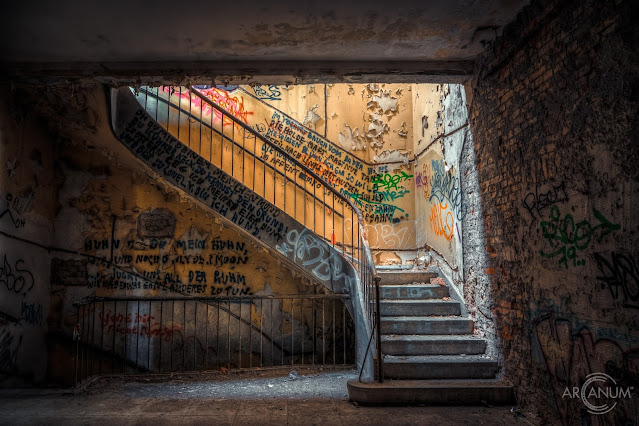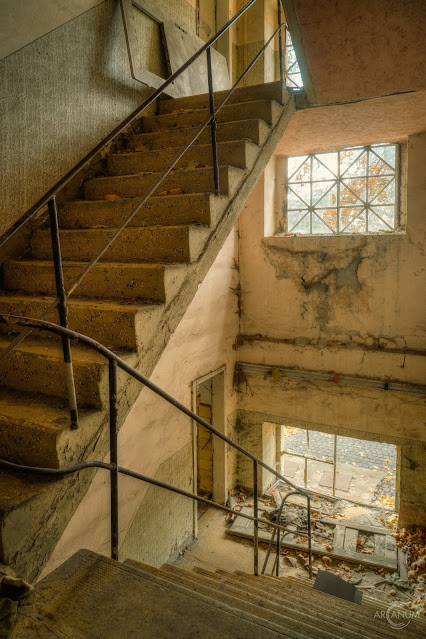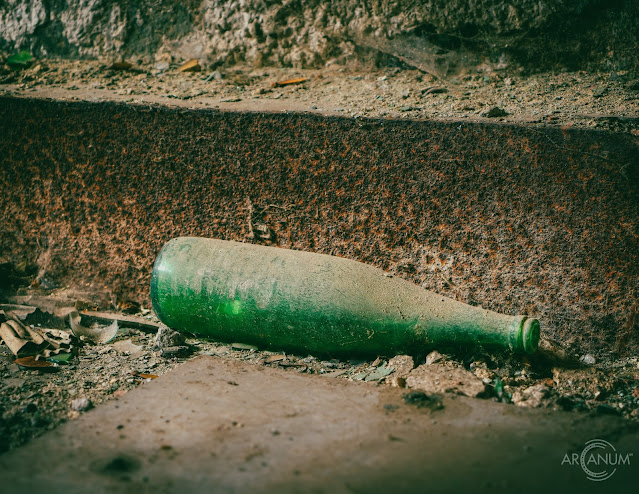In December 2019, a good friend asked me if I would like to accompany him on a special excursion to Hamburg that night. His plan was to climb into the world's largest Bismarck memorial to take photos of the air-raid shelters underneath.
Of course, this was an opportunity I couldn't pass up.
It was planned that the renovation work, which had already been decided upon, would begin only about two months later - and that would probably mean that any further attempt in the future would be futile.
So we set off in the evening. About an hour later, we reached the park where the Bismarck monument has been located since 1906.
We found a parking space nearby and set off with our equipment.
The monument was surrounded by a wall of wooden panels in preparation for the upcoming restoration. However, there was an opening that we were able to squeeze through. And apparently not just us, because behind the passageway we discovered a small “tent city” of homeless people who were using this reasonably sheltered spot as a place to stay.
We had to climb a few steps to reach the base of the memorial, where the air-raid shelters were built using 2000 tons of concrete during the Second World War.
There was a metal door in the floor. To our surprise, it was not locked and could be opened easily.
Inside, a wooden staircase led down. Below the statue is a conical room about 15 meters high, surrounded by eight smaller rooms. This inner structure originally served to ventilate the monument.
We had to climb a few steps to reach the base of the memorial, where the air-raid shelters were built using 2000 tons of concrete during the Second World War.
There was a metal door in the floor. To our surprise, it was not locked and could be opened easily.
Inside, a wooden staircase led down. Below the statue is a conical room about 15 meters high, surrounded by eight smaller rooms. This inner structure originally served to ventilate the monument.
The interior contains murals, including coats of arms and a swastika as a sun wheel, as well as quotes from Bismarck in Gothic script that have been taken out of context. These murals were created in the course of converting the memorial into an air-raid shelter.
After a good hour, we had explored all areas of the monument and our photo tour was over.
This was a very special exploration for me, not only because of the historical significance of the memorial, but also because of the fact that it is a memorial that has been converted into an air raid shelter!
Disclaimer:
The depiction of any prohibited symbols in this article is for historical documentation purposes only!





















































